|
Books Should Be Free Loyal Books Free Public Domain Audiobooks & eBook Downloads |
|
|
Books Should Be Free Loyal Books Free Public Domain Audiobooks & eBook Downloads |
|
Religion |
|---|
|
Book type:
Sort by:
View by:
|
By: Thomas Hodson | |
|---|---|
 Old Daniel
Old Daniel
| |
By: Thomas Jefferson (1743-1826) | |
|---|---|
 Jefferson Bible - The Life and Morals of Jesus of Nazareth
Jefferson Bible - The Life and Morals of Jesus of Nazareth
The Life and Morals of Jesus of Nazareth, commonly referred to as the Jefferson Bible, was a book constructed by Thomas Jefferson in the later years of his life by cutting and pasting with a razor and glue numerous sections from the New Testament as extractions of the doctrine of Jesus. Jefferson's condensed composition is especially notable for its exclusion of all miracles by Jesus and most mentions of the supernatural, including sections of the four gospels that contain the Resurrection and most other miracles, and passages that portray Jesus as divine. - Summary by Wikipedia | |
By: Thomas Kelly Cheyne (1841-1915) | |
|---|---|
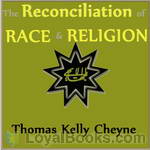 The Reconciliation of Races and Religions
The Reconciliation of Races and Religions
“The primary aim of this work is twofold,” writes Thomas K. Cheyne. “It would fain contribute to the cause of universal peace, and promote the better understanding of the various religions which really are but one religion. The union of religions must necessarily precede the union of races, which at present is so lamentably incomplete…. I have endeavoured to study the various races and religions on their best side, and not to fetter myself to any individual teacher or party, for ‘out of His fullness have all we received... | |
By: Thomas Kempis (1380?-1471) | |
|---|---|
 The Chronicle of the Canons Regular of Mount St. Agnes
The Chronicle of the Canons Regular of Mount St. Agnes
| |
By: Thomas More (1478?-1535) | |
|---|---|
 Dialogue of Comfort Against Tribulation With Modifications To Obsolete Language By Monica Stevens
Dialogue of Comfort Against Tribulation With Modifications To Obsolete Language By Monica Stevens
| |
By: Thomas Paine | |
|---|---|
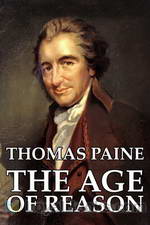 The Age of Reason
The Age of Reason
A Universalist book, The Age of Reason advocates for the existence of natural religion and challenges the structure of all organized religion. First written and distributed as pamphlets, the book was later published into two parts. Paine puts forward his personal beliefs, debating reason and revelation, while analyzing the Bible and the influence organized religion has on society. Exploring topics including natural religion, criticism of corrupt religious institutions, and distinction between rationality and blind faith in the supernatural, the book presents a guide for the conscious and free spiritual thinkers... | |
 Age of Reason (version 2)
Age of Reason (version 2)
The Age of Reason; Being an Investigation of True and Fabulous Theology is a pamphlet, written by a British and American revolutionary Thomas Paine. The Age of Reason challenges institutionalized religion and challenges the legitimacy of the Bible, the central sacred text of Christianity. Published in three parts in 1794, 1795, and 1807, it was a bestseller in the United States, where it caused a short-lived deistic revival. Part 1 was written sometime in 1793, and attacks the concepts of divine revelation and inspiration... | |
By: Thomas Scott (1747-1821) | |
|---|---|
 Hosea: from The Holy Bible with Original Notes
Hosea: from The Holy Bible with Original Notes
Hosea, whose prophecy we now enter upon, exercised his sacred office for a great many years: he predicted the captivity of the ten Tribes long before it arrived, yet he probably lived to witness its near approach. He is supposed to have been of the kingdom of Israel, though his prophecies frequently relate to Judah also His style is remarkably concise, sententious, and unconnected, though some parts are peculiarly pathetic, animated, and sublime. His general scope was to convince his people of their exceeding sinfulness, and to warn them by the terror, and lead them by the goodness, of God to repentance. - Summary by Introduction | |
By: Thomas Taylor (1738-1816) | |
|---|---|
 A Solemn Caution Against the Ten Horns of Calvinism
A Solemn Caution Against the Ten Horns of Calvinism
| |
By: Thomas Traherne (1636-1674) | |
|---|---|
 Centuries of Meditations
Centuries of Meditations
Thomas Traherne's best known work is a collection of paragraphs, divided into what he called "Centuries", meditating in a particularly intense and visionary manner on God, nature and His relationship with the life of man. | |
By: Thomas W. Rolleston (1857-1920) | |
|---|---|
 Myths & Legends of the Celtic Race
Myths & Legends of the Celtic Race
| |
By: Thomas Wentworth Higginson (1823-1911) | |
|---|---|
 The Sympathy of Religions
The Sympathy of Religions
| |
By: Thomas Whittaker (1856-1935) | |
|---|---|
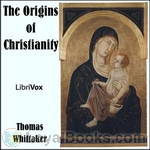 The Origins of Christianity
The Origins of Christianity
The full title of this book is The Origins of Christianity with an Outline of Van Manen’s Analysis of The Pauline Literature. Willem Christiaan van Manen (1842-1905) was a Dutch theologian. The vast majority of van Manen’s radical criticism of the New Testament and Christian origins has never been translated into English.In this book, Thomas Whittaker outlines the arguments of van Manen for an English-speaking audience. Van Manen’s work is not now generally known, but his views obtained notoriety by the articles and books that he wrote, in which he maintained that none of the Epistles that bear the Apostle Paul’s name were in fact written by him... | |
By: Thornton Chase | |
|---|---|
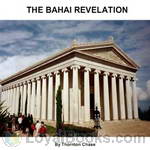 The Bahai Revelation
The Bahai Revelation
Thornton Chase (1847 – 1912) is commonly recognized as the first convert to the Bahá’í Faith of Occidental background. During his life he organized many Bahá’í activities in Chicago and Los Angeles and was considered a prominent Bahá’í. In 1894, Chase met Ibrahim Kheiralla, a Bahá’í from Beirut who had recently come to the United States. Chase and a small group of Chicagoans began to study the Bahá’í Faith with him. By 1895 he had completed the class and become a Bahá’í... | |
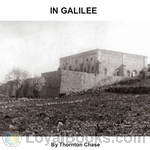 In Galilee
In Galilee
Thornton Chase (1847 – 1912) is commonly recognized as the first convert to the Bahá’í Faith of Occidental background. During his life he organized many Bahá’í activities in Chicago and Los Angeles and was considered a prominent Bahá’í. In 1907 Chase was able to go on pilgrimage. Though Chase was able to be with `Abdu’l Bahá in Akka for only three days, the experience transformed him. `Abdu’l Bahá, highly impressed by Chase’s qualities, conferred on him the title Thábit, “steadfast... | |
By: Timothy S. Arthur (1809-1885) | |
|---|---|
 All's for the Best
All's for the Best
| |
 Words of Cheer for the Tempted, the Toiling, and the Sorrowing
Words of Cheer for the Tempted, the Toiling, and the Sorrowing
| |
 Who Are Happiest? and Other Stories
Who Are Happiest? and Other Stories
| |
 Ten Nights in a Bar Room
Ten Nights in a Bar Room
| |
By: Tito Vignoli (1828-1914) | |
|---|---|
 Myth and Science An Essay
Myth and Science An Essay
| |
By: Twentieth Century New Testament | |
|---|---|
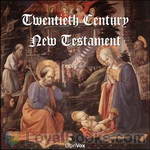 Twentieth Century New Testament
Twentieth Century New Testament
Published in 1904, The Twentieth Century New Testament is considered the first translation of the Bible into modern English. It was produced in Britain over a period of 15 years by approximately 20 people -- ministers, housewives, school teachers and businessmen -- who were united by their desire for a New Testament in the language of the people. They were advised by such scholars as J. Rendel Harris and Richard Weymouth so their rendering is quite accurate. In addition they made some effort at rearranging the New Testament books in the order scholars believe they were written -- Mark comes before Matthew, for instance... | |
By: Ukawsaw Gronniosaw (c.1705-1775) | |
|---|---|
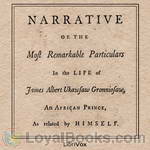 A Narrative of the Most Remarkable Particulars in the Life of James Albert Ukawsaw Gronniosaw
A Narrative of the Most Remarkable Particulars in the Life of James Albert Ukawsaw Gronniosaw
Ukawsaw Gronniosaw, also known as James Albert, (born ca. 1705 - 1775) was a freed slave and autobiographer. His autobiography is considered the first published by an African in Britain. Gronniosaw's autobiography was produced in Kidderminster in the late 1760s. Its full title is A Narrative of the Most remarkable Particulars in the Life of James Albert Ukawsaw Gronniosaw, an African Prince, As related by himself. It was the first Slave narrative in the English language. Published in Bath in 1772, it gives a vivid account of Gronniosaw's life, from his capture in Africa through slavery to a life of poverty in Colchester and Kidderminster... | |
By: Unknown | |
|---|---|
 Christmas Poetry and Hymn Collection
Christmas Poetry and Hymn Collection
This collection includes 40 different Christmas carols collected and read by Douglas D. Anderson, the creator of The Hymns and Carols of Christmas website, a public-domain collection of Christmas music containing over 2,600 hymns, carols and songs. | |
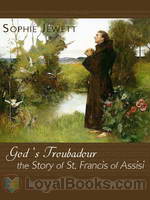 God's Troubadour, The Story of St. Francis of Assisi
God's Troubadour, The Story of St. Francis of Assisi
Francis, a young Italian boy, is a merchant’s son who is enthralled by the troubadour songs and tales of knights that his father brings back from his travels. He decides to become a knight, but after seeing the poor and suffering in the tragedies of war, he decides to give away all of his worldly possessions and become a troubadour for God. | |
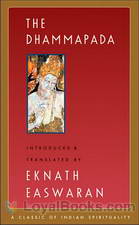 The Dhammapada
The Dhammapada
The Dhammapada is is a Buddhist scripture, containing 423 verses in 26 categories. According to tradition, these are verses spoken by the Buddha on various occasions, most of which deal with ethics. It is is considered one of the most important pieces of Theravada literature. Despite this, the Dhammapada is read by many Mahayana Buddhists and remains a very popular text across all schools of Buddhism. – Excerpted from Wikipedia | |
 The Meaning of the Glorious Koran
The Meaning of the Glorious Koran
The Koran (Qur’an) is regarded by Muslims as the word of God (Allah) as revealed to the prophet Muhammad. It is divided into 114 chapters (surahs), arranged roughly by length. This version, The Meaning of the Glorious Koran, is a widely used English translation of the Koran by a Muslim Englishman. Many Muslims, however, including Pickthall, believe that true translations of the Koran from the original Arabic are impossible, and see translations into other languages only as useful interpretations. | |
 James Joyce in Context: Telemachus
James Joyce in Context: Telemachus
Collection of various works which James Joyce quotes and references to in his epic novel Ulysses, and provides them in audio form. Perfect for Joyce scholars, fans, and aficionados! | |
 The First Book of Adam and Eve
The First Book of Adam and Eve
The Conflict of Adam and Eve with Satan is a Christian pseudepigraphical work found in Ge’ez, translated from an Arabic original and thought to date from the 5th or 6th century AD. It was first translated from the Ethiopic version into German by August Dillmann. It was first translated into English by S. C. Malan from the German of Ernest Trumpp. The first half of Malan’s translation is included as the “First Book of Adam and Eve” and the “Second Book of Adam and Eve” in The Lost Books of the Bible and the Forgotten Books of Eden... | |
 The Psalms and Odes of Solomon
The Psalms and Odes of Solomon
One of the Pseudepigrapha, the Psalms of Solomon is a group of eighteen psalms (religious songs or poems) that are not part of any scriptural canon (they are, however, found in copies of the Peshitta). The Psalms of Solomon were referenced in Early Christian writings, but lost to modern scholars until a Greek manuscript was rediscovered in the 17th century. Politically, the Psalms of Solomon are anti-Maccabee, and some psalms in the collection show a clear awareness of the Roman conquest of Jerusalem under Pompey in 63 BCE, metaphorically treating him as a dragon who had been sent by God to punish the Maccabees... | |
 The Epistle of Polycarp to the Philippians
The Epistle of Polycarp to the Philippians
Polycarp’s Letter to the Philippians (often simply called To the Philippians) composed around 110 to 140 AD [1] is described by Irenaeus as follows: There is also a forceful epistle written by Polycarp to the Philippians, from which those who wish to do so, and are anxious about their salvation, can learn the character of his faith, and the preaching of the truth. (J. Stevenson, A new Eusebius [London: SPCK, 1965] p. 120) This is one quote from the epistle: “Stand fast, therefore, in this conduct... | |
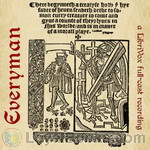 Everyman
Everyman
The Somonyng of Everyman (The Summoning of Everyman), usually referred to simply as Everyman, is a late 15th-century English morality play. Like John Bunyan's novel Pilgrim's Progress, Everyman examines the question of Christian salvation by use of allegorical characters, and what Man must do to attain it. The premise is that the good and evil deeds of one's life will be tallied by God after death, as in a ledger book. The play is the allegorical accounting of the life of Everyman, who represents all mankind... | |
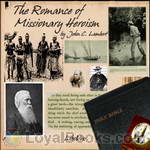 The Romance of Missionary Heroism
The Romance of Missionary Heroism
The title page gives this book the subtitle, “True stories of the intrepid bravery and stirring adventures of missionaries with uncivilized man, wild beasts, and the forces of nature in all parts of the world.” The thrilling accounts in this collection include stories of Jacob Chamberlain’s medical ministry in India, the dangers faced by Alexander Mackay in Uganda, James Chalmers’ work among the headhunters of New Guinea, John Paton’s mission to the South Sea cannibals, and the Hawaiian queen Kapiolani’s challenge to the gods of the volcano... | |
 Three Ecumenical Creeds
Three Ecumenical Creeds
MANUAL OF SURGERY, OXFORD MEDICAL PUBLICATIONSBY ALEXIS THOMSON, F.R.C.S.Ed.PREFACE TO SIXTH EDITION Much has happened since this Manual was last revised, and many surgical lessons have been learned in the hard school of war. Some may yet have to be unlearned, and others have but little bearing on the problems presented to the civilian surgeon. Save in its broadest principles, the surgery of warfare is a thing apart from the general surgery of civil life, and the exhaustive literature now available on every aspect of it makes it unnecessary that it should receive detailed consideration in a manual for students... | |
 New Etext of Bible [King James Version]
New Etext of Bible [King James Version]
| |
 Wisdom of the East Buddhist Psalms translated from the Japanese of Shinran Shonin
Wisdom of the East Buddhist Psalms translated from the Japanese of Shinran Shonin
| |
 The Kitáb-i-Íqán
The Kitáb-i-Íqán
| |
 The Kitáb-i-Aqdas
The Kitáb-i-Aqdas
| |
 A Critical Exposition of the Popular 'Jihád' Showing that all the Wars of Mohammad Were Defensive; and that Aggressive War, or Compulsory Conversion, is not Allowed in The Koran - 1885
A Critical Exposition of the Popular 'Jihád' Showing that all the Wars of Mohammad Were Defensive; and that Aggressive War, or Compulsory Conversion, is not Allowed in The Koran - 1885
| |
 Codex Junius 11
Codex Junius 11
| |
 Prayers and Meditations
Prayers and Meditations
| |
 The Hidden Words of Bahá'u'lláh
The Hidden Words of Bahá'u'lláh
| |
 Some Answered Questions
Some Answered Questions
| |
 The Seven Valleys and the Four Valleys
The Seven Valleys and the Four Valleys
| |
 Gems of Divine Mysteries
Gems of Divine Mysteries
| |
 Paris Talks
Paris Talks
| |
 Hebrew Heroes A Tale Founded on Jewish History
Hebrew Heroes A Tale Founded on Jewish History
| |
 Tablets of Bahá’u’lláh Revealed after the Kitab-i-Aqdas
Tablets of Bahá’u’lláh Revealed after the Kitab-i-Aqdas
| |
 The Secret of Divine Civilization
The Secret of Divine Civilization
| |
 Epistle to the Son of the Wolf
Epistle to the Son of the Wolf
| |
 Gleanings from the Writings of Bahá'u'lláh
Gleanings from the Writings of Bahá'u'lláh
| |
 The Promulgation of Universal Peace
The Promulgation of Universal Peace
| |
 `Abdu'l-Bahá in London
`Abdu'l-Bahá in London
| |
 Selections from the Writings of `Abdu'l-Bahá
Selections from the Writings of `Abdu'l-Bahá
| |
 Tablets of Abdul-Baha Abbas
Tablets of Abdul-Baha Abbas
| |
 Tablets of the Divine Plan
Tablets of the Divine Plan
| |
 The Will And Testament of ‘Abdu’l-Bahá
The Will And Testament of ‘Abdu’l-Bahá
| |
 `Abdu'l-Bahá's Tablet to Dr. Forel
`Abdu'l-Bahá's Tablet to Dr. Forel
| |
 The Proclamation of Bahá'u'lláh
The Proclamation of Bahá'u'lláh
| |
 The Summons of the Lord of Hosts
The Summons of the Lord of Hosts
| |
 Memoir of Old Elizabeth, A Coloured Woman
Memoir of Old Elizabeth, A Coloured Woman
| |
 Memorials of the Faithful
Memorials of the Faithful
| |
 Bahá'í World Faith
Bahá'í World Faith
| |
 A Traveler's Narrative Written to Illustrate the Episode of the Báb
A Traveler's Narrative Written to Illustrate the Episode of the Báb
| |
 The A, B, C. With the Church of England Catechism
The A, B, C. With the Church of England Catechism
| |
 Foundations of World Unity
Foundations of World Unity
| |
 Amy Harrison or Heavenly Seed and Heavenly Dew
Amy Harrison or Heavenly Seed and Heavenly Dew
| |
 Book of Enoch
Book of Enoch
The Book of Enoch, is an ancient, non-canonical Jewish work. Estimates vary on the actual dates of authorship. However, Enoch was alive during the Antediluvian period as recorded in the Hebrew Bible. Fragments of the text, were discovered in cave 4 of the Qumran caves in 1948. Enoch, born in the 7th generation from Adam, was the grandfather of Noah. Enoch prophesied concerning the judgments on mankind . Enoch says his prophetic words were not for his generation but for a “generation of elect and righteous people far in the future that would be living in the day of tribulation when all the wicked and godless are to be removed... | |
 Didache: The Teaching of the Twelve Apostles
Didache: The Teaching of the Twelve Apostles
This short treatise was accounted by some of the Fathers as next to Holy Scripture. It was rediscovered in 1873 by a Greek Orthodox metropolitan of Nicomedia, in the codex from which, in 1875, he had published the full text of the Epistles of St. Clement. An old Latin translation was found in 1900. For convenience the contents may be divided into three parts: the first is the "Two Ways", the Way of Life and the Way of Death; the second part is a rituale dealing with baptism, fasting, and Holy Communion; the third speaks of the ministry... | |
 Dhammapada (Version 3)
Dhammapada (Version 3)
The Dhammapada collects sayings of the Buddha, offering advice on how to live a full and thoughtful life. The translation used for this recording is by Friedrich Max Müller and was first published in the 19th century. - Summary by Newgatenovelist | |
By: Unknown; | |
|---|---|
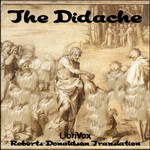 The Didache
The Didache
The Didache is the common name of a brief early Christian treatise (dated by most scholars to the late first or early second century), containing instructions for Christian communities. The text, parts of which may have constituted the first written catechism, has three main sections dealing with Christian lessons, rituals such as baptism and eucharist, and Church organization. It was considered by some of the Church Fathers as part of the New Testament but rejected as spurious or non-canonical by others, eventually not accepted into the New Testament canon with the exception of the Ethiopian Orthodox Church “broader canon... | |
By: Upton Sinclair (1878-1968) | |
|---|---|
 The Profits of Religion
The Profits of Religion
The Profits of Religion: An Essay in Economic Interpretation is a non-fiction book by the American novelist and muckraking journalist Upton Sinclair, first published in 1917. It is a snapshot of the religious movements in the U.S. before its entry into World War I. In this book, Sinclair attacks institutionalized religion as a "source of income to parasites, and the natural ally of every form of oppression and exploitation." | |
 They Call Me Carpenter
They Call Me Carpenter
The story takes place in the fictional city of Western City circa 1920. It begins with a man named Billy who is attacked by a mob of ex-servicemen outside a theater after watching a German film. Billy stumbles into a church to escape the mob and is visited by Carpenter, that is Jesus, who walks out of the stained glass window of the church. Carpenter is shocked and appalled by his observations of greed, selfishness, lust, sorrow, and the ultimate division between rich and poor. The story then roughly follows the ministry of Jesus. | |
 Book of Life
Book of Life
Faith and reason, love and virtue, morality and mortality! In these two short volumes the famous novelist, essayist, and playwright, Upton Sinclair, confided his most prized worldly wisdom for generations to come. His kind and witty personal advice both provokes and enlightens page by page. | |
By: Valmiki (ca. 400 BC?) | |
|---|---|
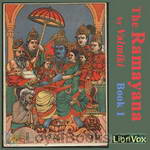 The Ramayana, Book 1
The Ramayana, Book 1
The Ramayana is an ancient Sanskrit epic. It is attributed to the Hindu sage Valmiki and forms an important part of the Hindu canon (smṛti). The Ramayana is one of the two great epics of India, the other being Mahabharata. It depicts the duties of relationships, portraying ideal characters like the ideal servant, the ideal brother, the ideal wife and the ideal king. | |
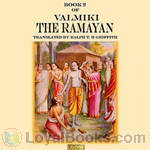 The Ramayana Book 2
The Ramayana Book 2
The Ramayana is an ancient Sanskrit epic. It is attributed to the Hindu sage Valmiki and forms an important part of the Hindu canon (smṛti). The Ramayana is one of the two great epics of India, the other being Mahabharata. It is the story of Rama, who emabrks on an epic journey followed by the fight with Ravana, the demon king who abducted Rama's wife, Sita. The epic depicts the duties of relationships, portraying ideal characters like the ideal servant, the ideal brother, the ideal wife and the ideal king. (Introduction by Om123) | |
By: Various | |
|---|---|
 Christmas Carol Collection
Christmas Carol Collection
Though carols are traditionally associated with Christmas, this was not always the case. “Carol” comes from the French word 'carole' which means circle dance accompanied by singing. It was part of any festivity and gradually came to be associated with holidays like Christmas. In England, festivities were banned following the Civil War and Protestantism, but many song writers and Protestants wrote musical works to be sung at Christmas and these were referred to as “carols.” Today, Christmas anywhere in the world is incomplete without carol singers and songs... | |
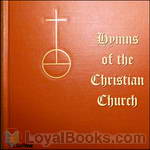 Hymns of the Christian Church
Hymns of the Christian Church
A collection of classic Christian hymns spanning the centuries. Some of the hymns are read; others are sung. | |
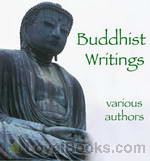 Buddhist Writings
Buddhist Writings
An anthology of Buddhist scriptures, appropriate as an introduction to its vast literature, or as a sampler for those who want to better understand Buddhism. The selections in this anthology are primarily from the Theravada school of Buddhism. | |
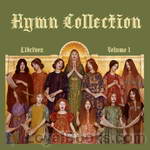 Hymn Collection
Hymn Collection
A selection of twenty hymns sung in this recording. | |
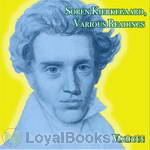 Soren Kierkegaard, Various Readings
Soren Kierkegaard, Various Readings
The writings listed here represent books about Soren Kierkegaard. A fragment of his work, On the Dedication to "That Single Individual", has made it to the public domain. Who was Soren Kierkegaard? He was a Danish philosopher and religious author; b. Copenhagen May 6, 1813; d. there Nov. 11, 1855. His father, Michael, a clothing merchant, once cursed God when he was young. This one incident caused him so much distress that it affected him with a deep melancholy, which he transferred to poor Soren... | |
 Poems and Prose for the Departed
Poems and Prose for the Departed
This is a collection of short poems and readings, both religious and secular, on death and bereavement. | |
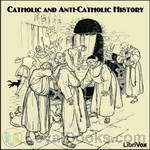 Catholic and Anti-Catholic History
Catholic and Anti-Catholic History
G.K. Chesterton and James Walsh join Hilaire Belloc in an energetic rollout of the means by which history becomes propaganda, to the damage, not only to truth, but to the human soul. | |
 Tiger and Tom and Other Stories for Boys
Tiger and Tom and Other Stories for Boys
| |
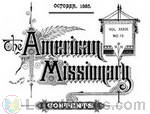 The American Missionary — Volume 54, No. 3, October, 1900
The American Missionary — Volume 54, No. 3, October, 1900
| |
 Correspondence Relating to Executions in Turkey for Apostacy from Islamism
Correspondence Relating to Executions in Turkey for Apostacy from Islamism
| |
 The Baptist Magazine, Vol. 27, January, 1835
The Baptist Magazine, Vol. 27, January, 1835
| |
 Seven Roads to Hell
Seven Roads to Hell
No one goes to hell by committing sin in the abstract, sin in general. Our character traits, talents and dispositions, our experiences — everything about us points out to us a particular road to hell — one of the seven that are called the capital sins. For us, this or that particular one is the fastest and easiest because of who we are, what we are, where we find ourselves. And the road sign will read either pride, covetousness, lust, anger, gluttony, envy or sloth. The seven capital sins are called capital because they are the sins of primary importance and inevitably spawn a whole litter of other sins... | |
 Reformation Collection Volume 1
Reformation Collection Volume 1
This volume of the Reformation collection begins with a summary of Protestant belief in the form of the Belgic Confession and John Calvin's 'cover letter' to Francis I of France requesting that he read Calvin's Institutes of the Christian Religion to understand the Protestant doctrine from its source rather than secondhand. 100 aphorisms summarising the contents of the Institutes follow as well as some instructions given by Thomas Cranmer showing the effect of the Reformation for clergy and parishes, as does a short protestation from the reformer William Tyndale expressing the Reformation methodology privileging the Bible as the source of doctrine and practice... | |
 Early Church Collection Volume 1
Early Church Collection Volume 1
The collection begins with two short works on the Trinity by Gregory of Nyssa, followed by two works on Christology by Theodoret and Pope Leo I. Victorinus interprets Genesis 1 allegorically to justify certain early church practices and traces the number 7 through the whole Bible. Hippolytus lists various liturgical practices of the Roman church at the start of the 3rd century with potentially much earlier origins. In "On the Faith", Gregory of Nyssa defends the divinity of the Son of God and the Holy Spirit... | |
 Creeds of Christendom
Creeds of Christendom
This is based on Philip Schaff's Creeds of Christendom taking only the creeds that he selected, using the translations he supplied where possible but rearranged chronologically but excluding his commentary and notes. "He who wishes to grow strong in his religious life, let him, I say, next to the Bible, feed himself on the great Creeds of the Church. There is a force of religious inspiration in them which you will seek in vain elsewhere. And this for good reasons. First, because it is ever true that it is by the truth that sanctification is wrought... | |
 Reformation Collection Volume 2
Reformation Collection Volume 2
This volume of the Reformation collection, which has a particular focus on the English Reformation, begins with William Tyndale's lively tract on the key Reformation doctrine of Justification by faith alone. Then follow two historical accounts of the reception that Reformation ideas received. Martin Luther works line by line through the popular Marian hymn Salve Regina expressing his disagreement. Christ the End of the Law is John Calvin's summary of the gospel message, written as the preface to the Geneva Bible... | |
 Age of the Puritans Volume 1
Age of the Puritans Volume 1
This volume of The Age of the Puritans begins with William Perkin's concise summary of Christian doctrine written in response to popular misconceptions of the time and Robert Rollock's scheme for logically dividing doctrine into key topics. Rollock then explains the relationship between the written Scriptures and what he terms the "lively voice" heard in other ages, pre-empting what would later become the Quaker-Puritan debates. B.B. Warfield gives a 'best of' John Arrowsmith's Armilla Catechetica ... | |
 Reformation Collection Volume 3
Reformation Collection Volume 3
This volume of the Reformation collection, begins with John Calvin's summary of the contents for the Bible from the preface to the Geneva Bible. Catherine Parr, last wife of Henry VIII, contributes her "Prayers or Meditations", intended as a shortened Protestant equivalent to Thomas à Kempis' The Imitation of Christ. Next come accounts of trials and martyrdoms: Walter Mill, the last martyr of Scotland, John Bradford, an anonymous account of Protestants in Norfolk and Suffolk to commissioners sent by Mary I, Hugh Latimer's examination as an old man and the execution of Henry Grey, father of Lady Jane Grey... | |